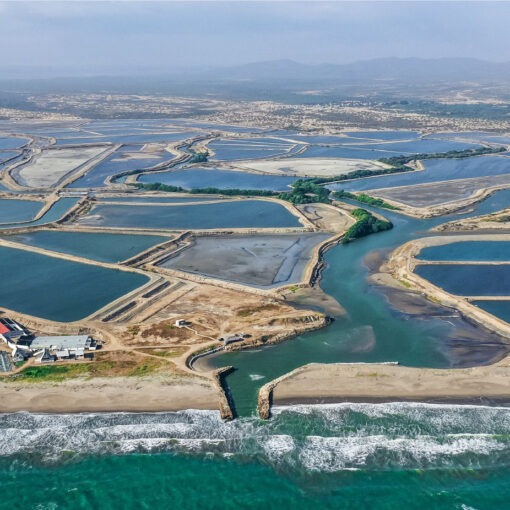Culturing and raising Asian sea bass (lates calcarifer) are expensive due to the limited supply and high market demand of fish meal, which is a vital protein source for this high-priced fish.
Asian sea bass, known in the Philippines as «apahap,» lives in freshwater, brackish and marine habitats. It is one of the many fish species cultured in Southeast Asia due to its high market value and demand.
Apahap fish, commonly served only in fine-dining restaurants, however, may soon be enjoyed by middle-class families if the research of a scientist from the University of the Philippines (UP)-Visayas succeeds.
Dr. Erlinda Ganzon-Naret, a scientist from the UP-Visayas, conducted a scientific research on the potential of three legume seeds as protein sources for apahap.
With the goal to «develop cost-effective diets for a more profitable production,» Ganzon-Naret used pigeon pea (kadyos), yellow mungbean (mongo), and kidney bean (bitswelas) as food replacement to fish meal.
In her experiment conducted in UP-Visayas Multi-Species Hatchery in Miagao, Iloilo, Ganzon-Naret said 20 percent of the fish meal protein was reduced and replaced by the legume seed meal.
She said the results of her scientific research showed that «the nutrient disposition was highest in the controlled diet with fish meal alone,» while the growth in two other treatments containing pigeon pea and the kidney bean seed meal «were of inferior growth.»
During a media brunch initiated by UP on Wednesday, December 6, at Hotel Del Rio in Iloilo City, the Ilongga scientist said she, however, made a positive discovery in the treatment with yellow mungbean seed meal.
«These fish fed (in) the controlled diet (of fish meal) are comparable with those fish fed with yellow mungbean seed meal,» Ganzon-Naret said, adding that «considering that the partial replacement of yellow mungbean seed meal at 20 percent does not have adverse effect. I think you could increase the meal replacement by up to 40 percent.»
She clarified though that the meal replacement of up to 40 percent is not yet clinically tried, adding it is still impossible to totally replace the fish meal.
According to the Fisheries and Aquaculture Department of the Food and Agriculture Organization (FAO) of the United Nations, any fish or shellfish can be used to make fish meal, making it a good source of protein for apahap, which is carnivorous in nature.
«It’s impossible to have a total replacement of fish meal considering the fish is carnivorous and they require animal protein source to supply their nutrients,» Ganzon-Naret said.
Ganzon-Naret said she aims to conduct further tests to find out whether the Apahap fish fed with yellow mungbean seeds tastes the same with those that are fed with fish meal.
«We have to invite our co-employees from UP-Visayas to do the taste test. We have the criteria whether it is agreeable, the odor… like that,» she said.
The UP-Visayas scientist said the results of her research are not yet applicable to fisherfolk who commercially culture Asian sea bass, saying that in her experiment, she only used 100-liter tanks, where she fed legume seed meals to 45-day-old apahap fishes for 75 days.
«We could not go on a commercial level, kasi we have to verify the technologies before going to the commercial state,» said Ganzon-Naret, adding that «to obtain a marketable-sized sea bass, you have to raise it in the brackish water ponds or in seawater ponds usually for six months.»
With the availability of funds at Leganes, Iloilo, which is one of the experimental sites under UP-Visayas, the scientist is looking forward to doing her scientific research in a larger scale.
According to FAO, apahap is ideal for aquaculture as it can tolerate crowding and has wide physiological tolerance.
Aquaculture is the farming of aquatic organisms, including fish, mollusks, crustaceans and aquatic plants. It is considered the fastest expanding food production in the world.
Source: http://www.sunstar.com.ph/iloilo/local-news/2017/12/08/mongo-beans-diet-could-help-make-apahap-affordable-578690

Advancing aquaculture together.
Subscribe to our Newsletter for exclusive premium content, including our Digital Magazine!






